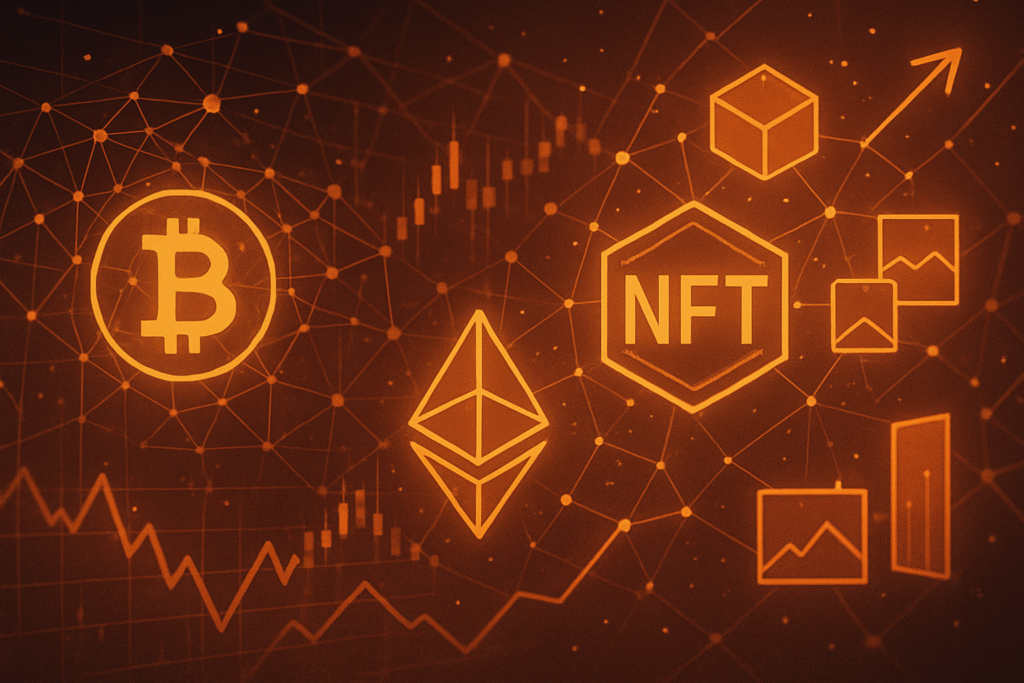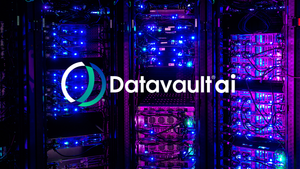
The Non-Fungible Token (NFT) market in October 2025 is undergoing a profound transformation, moving beyond the speculative fervor of its early boom into a phase defined by practical utility and sustainable growth. This evolution is occurring amidst a broader cryptocurrency market showing strong bullish signals, with Bitcoin (BTC) nearing all-time highs and institutional interest surging. The NFT space, while not experiencing a sector-wide pump akin to 2021, is seeing a nuanced recovery, driven by a discerning investor base and a clear shift towards real-world applications and integrated Web3 experiences.
Recent months have underscored this maturation, with significant sales volumes in July reaching over $574 million and an average sale value climbing to $113.08 – the highest in six months. Blue-chip collections like CryptoPunks continue to command top dollar, with CryptoPunk #2406 recently selling for $218,540, demonstrating sustained interest in established digital art. However, the true narrative of 2025 lies in the burgeoning integration of NFTs into gaming, decentralized finance (DeFi), and real-world asset tokenization, signaling a pivotal moment for the ecosystem. This shift is crucial, as it lays the groundwork for broader adoption and long-term viability, moving NFTs from mere collectibles to foundational digital assets with tangible value and purpose within the expanding digital economy.
Market Impact and Price Action
The NFT market in October 2025 showcases a divergent performance among its blue-chip collections, reflecting a broader market shift towards utility and sustained value. Pudgy Penguins (PENGU), for instance, has demonstrated remarkable resilience and growth. The associated PENGU token has seen significant upward momentum, with some predictions placing its October average price around $0.103927, potentially reaching $0.116918. Its floor price has also shown robust increases, notably outpacing other blue-chips in July. Strategic partnerships, such as with Swivul for travel bookings, and cross-chain integrations via LayerZero, are bolstering its utility and driving adoption, indicating strong investor confidence in projects with clear roadmaps and practical applications.
In contrast, the Bored Ape Yacht Club (BAYC), once an icon of the NFT boom, has experienced a notable downturn. As of June 2025, its floor price had plummeted to 10 ETH, a staggering 92% decrease from its May 2022 all-time high of nearly 145 ETH. This decline is largely attributed to waning retail interest and increased competition from newer collections on alternative blockchains. Despite these challenges, Yuga Labs, the creator of BAYC, is strategically refocusing on its core NFT projects and leveraging events like ApeFest 2025 to reinvigorate community engagement. A significant legal victory in October 2025, dismissing a class-action lawsuit alleging BAYC NFTs were unregistered securities, provides some regulatory clarity, potentially paving the way for renewed investor interest.
CryptoPunks, another foundational NFT collection, has shown signs of a strong recovery and consistent high-value sales. In late September 2025, CryptoPunks led weekly NFT sales, with individual pieces like CryptoPunk #2406 fetching 48.8 ETH ($218,540). The collection’s floor price has also seen a healthy increase, currently standing at 47.48 ETH, with a robust 24-hour trading volume. This sustained demand for CryptoPunks underscores the enduring value placed on historical significance and scarcity within the digital art segment of the NFT market.
Overall trading volume in the NFT market has been mixed. While some reports indicated a 50-60% plunge in trading volume for major collections in September 2025, other data showed total NFT sales volume exceeding $551 million in the same month, with daily global sales around $20 million as of early October 2025. The market capitalization for the NFT sector is estimated at $49 billion in 2025, with projections for continued growth. Liquidity remains influenced by broader crypto price volatility, but the rise of Layer-2 solutions like Polygon (MATIC) and Arbitrum (ARB) and the increasing prominence of Solana (SOL) are enhancing accessibility and reducing transaction costs, fostering a more robust trading environment. This current landscape marks a significant departure from the speculative "NFT Summer" of 2021, emphasizing utility, sustainable projects, and institutional interest over fleeting hype.
Community and Ecosystem Response
The crypto community in October 2025, particularly on platforms like X (formerly Twitter) and Reddit, reflects a cautiously optimistic sentiment regarding the NFT market, largely buoyed by the broader "Uptober" rally in cryptocurrencies and Bitcoin's (BTC) robust performance. Discussions are now heavily centered on utility, moving away from the "flipping JPEGs" mentality that dominated earlier cycles. There's a palpable acknowledgment that for NFTs to thrive, they must offer tangible benefits to holders, such as exclusive access, governance rights, or integration into gaming and real-world applications. This pragmatic approach is driving engagement, with communities recognizing the improved functionality of established projects like NBA Top Shot.
Crypto influencers and thought leaders are actively shaping this narrative, emphasizing long-term value creation over speculative hype. While the lure of "100x" returns still exists, prominent voices are advocating for projects with transparent tokenomics, audited smart contracts, and clear utility. Recent incidents, such as influencer MrBeast publicly denying involvement with a meme coin, highlight the ongoing efforts within the community to combat misinformation and promote responsible investment. There's also a growing recognition that genuine thought leadership is becoming more valuable amidst a deluge of AI-generated content, pushing for deeper insights and less recycled commentary.
The evolving NFT market is profoundly impacting related DeFi protocols and Web3 applications. There's a discernible shift towards utility-driven NFTs, with gaming NFTs leading the charge. Projects built on multi-chain ecosystems like Immutable, Polygon, and Solana are gaining significant traction, as developers and artists seek lower fees and faster transaction speeds compared to Ethereum (ETH). This move away from Ethereum's dominance is evident in its declining NFT sales volume, while alternative chains witness increased activity. The maturation of NFT gaming, with a focus on sustainable play-to-own models and interoperability, is fostering a new era of immersive and value-driven experiences. Furthermore, the broader DeFi ecosystem remains robust, with Total Value Locked (TVL) showing growth and decentralized perpetual exchanges seeing record trading volumes, indicating a healthy financial infrastructure supporting the evolving NFT landscape. Regulatory clarity, such as the dismissal of lawsuits classifying certain NFTs as securities, is also empowering Web3 innovation by reducing uncertainty for builders and investors.
What's Next for Crypto
The future of the NFT market, both in the short and long term, is poised for significant evolution, driven by a relentless pursuit of utility and real-world integration. In the immediate future (2024-2025), the market is expected to solidify its pivot from pure speculation to practical applications. While trading volumes might have tempered from their peaks, the sheer number of transactions is on an upward trajectory, signaling broader adoption by a diverse user base. The global NFT market, projected to reach approximately $61 billion in 2025, will be fueled by continuous infrastructure improvements, including more efficient Layer 2 solutions for Ethereum and intensified competition from alternative Layer 1 blockchains, all contributing to lower transaction fees and enhanced user experiences.
Looking further ahead to 2030, the NFT market is anticipated to expand dramatically, with market size projections soaring to between $211.7 billion and $247 billion. This exponential growth will be underpinned by the widespread integration of NFTs across various industries, the pervasive expansion of Web3 technologies, and the continued growth of the metaverse. NFTs are set to become the silent engines of the digital economy, enabling stronger digital rights, streamlining systems, and unlocking novel opportunities across countless sectors. Key catalysts for this growth include the wider adoption of cryptocurrencies, the burgeoning metaverse where NFTs define digital ownership, and the transformative impact on the gaming industry through play-to-earn and true asset ownership models.
Technological advancements will play a crucial role in shaping this future. Fractionalization will democratize access to high-value NFTs and tokenized real-world assets, enhancing liquidity and investor participation. The emergence of new, multi-chain marketplaces will offer superior usability, scalability, and interoperability, moving beyond single-blockchain limitations. Cross-chain interoperability is paramount, enabling seamless asset and data transfers across disparate networks like Ethereum, Solana, and Polygon, thereby fostering a unified NFT ecosystem. Furthermore, the development of Intelligent NFTs (iNFTs), capable of evolving attributes and linking with AI models, alongside enhanced security features and anti-counterfeit measures, will define the next generation of digital assets.
Regulatory changes, though slow, are gradually providing more clarity. While the U.S. still lacks specific federal legislation, the dismissal of certain lawsuits classifying NFTs as securities offers a glimmer of hope for reduced uncertainty. The EU's MiCA framework, effective since 2024, is setting a precedent for comprehensive crypto regulation, which will indirectly impact NFTs by establishing clearer guidelines for the broader digital asset space. Strategic considerations for projects and investors must prioritize utility and demonstrable value, moving beyond speculative art. Thorough due diligence, diversification, and a keen eye on evolving market trends and regulations are essential. Projects should embrace multi-chain strategies, leverage Layer 2 solutions, and explore Real-World Asset (RWA) tokenization to tap into significant market demand and institutional interest, focusing on long-term vision and genuine community engagement.
Bottom Line
The NFT market in October 2025 stands at a pivotal juncture, having evolved significantly from its early, speculative beginnings. The overarching theme is a pronounced shift towards utility-driven NFTs, where tangible benefits—such as exclusive access, membership perks, or in-game functionality—now outweigh pure aesthetic appeal for a majority of buyers. Gaming NFTs continue to lead this charge, accounting for a substantial portion of global transactions and revenue, underscoring their role as a primary driver of adoption. The market's robust growth, coupled with increasing institutional investment, signals a maturing asset class gaining legitimacy within the broader financial landscape.
Long-term, NFTs are poised to become an indispensable component of the Web3 infrastructure, fundamentally redefining digital ownership and intellectual property rights. They serve as a crucial gateway for mainstream crypto adoption, attracting millions to blockchain technology through engaging and practical applications. As the ecosystem addresses challenges related to scalability, regulatory clarity, and environmental sustainability, NFTs will increasingly power seamless digital interactions, from metaverse economies to tokenized real-world assets. Their ability to bridge the physical and digital realms, facilitate fractional ownership, and foster vibrant digital communities solidifies their role in shaping the future of the digital economy.
For investors and enthusiasts, monitoring key metrics is vital. Keep a close eye on the overall market capitalization and trading volumes, particularly the growth in utility-focused NFT categories like gaming and RWA tokenization. Track institutional investment inflows as a barometer of mainstream acceptance and observe the increasing adoption rates of multi-chain ecosystems and Layer 2 solutions for improved efficiency. Crucially, stay abreast of evolving regulatory frameworks globally, as clarity around NFT classification will significantly impact market stability and growth. Upcoming industry events such as the Blockchain Futurist Conference USA (November 5, 2025), Rare Evo (August 6-10, 2025), and Consensus 2026 (February 10-12, 2026) will offer invaluable insights into emerging trends and technological advancements.
This article is for informational purposes only and does not constitute financial or investment advice. Cryptocurrency investments carry significant risk.







